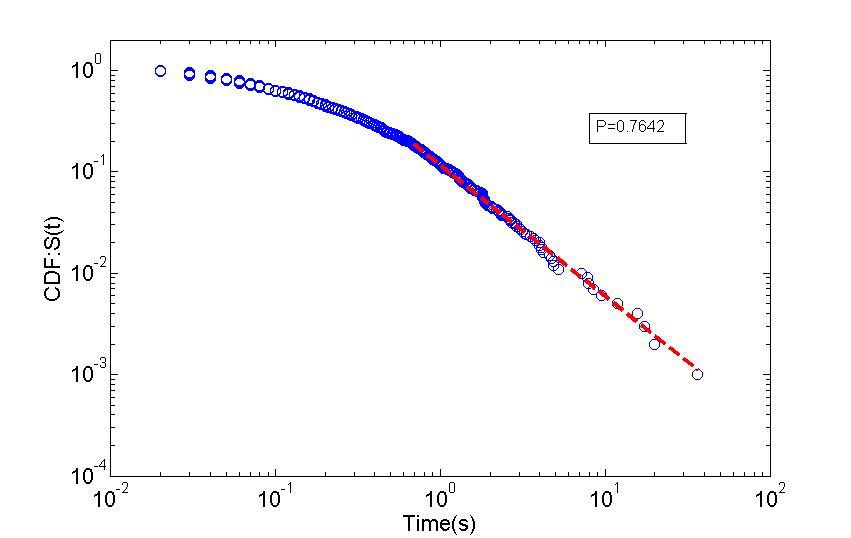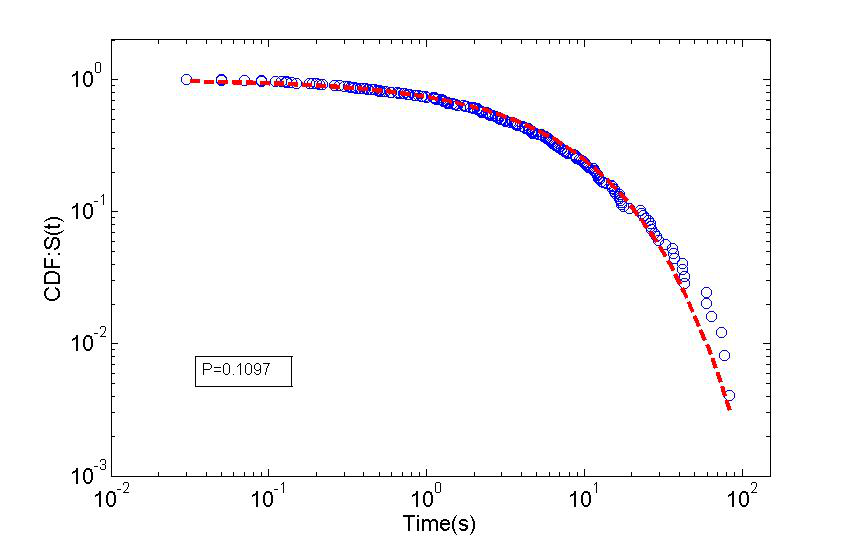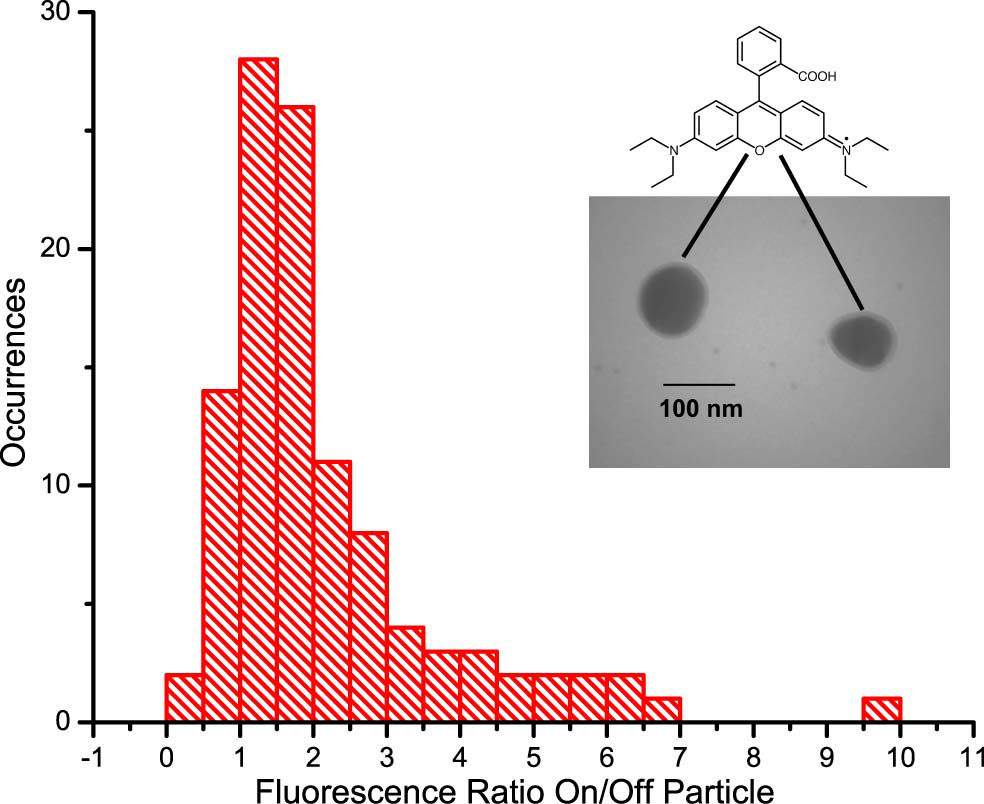57th Annual Report on Research 2012 Under Sponsorship of the ACS Petroleum Research Fund
Reports: UNI650873-UNI6: Probing Heterogeneous Electron Transfer Processes in Next-Generation Photovoltaics Using Single-Molecule Spectroscopy
Kristin L. Wustholz, PhD, College of William and Mary
Figure 1. Cumulative probability distributions (CDFs) for single-molecule blinking of RB on TiO2. (left) emissive and (right) non-emissive events are well represented by power law and Weibull distributions, respectively. | |
During the first year of support from the ACS Petroleum Research Fund, we pursued two strategies toward the goal of understanding electron transfer (ET) processes in next-generation solar cells: (1) characterizing heterogeneous ET processes in dye-sensitized solar cells (DSSCs) using single-molecule spectroscopy and robust statistical analyses, and (2) synthesizing model plasmon-enhanced DSSCs and probing molecular photophysics near metal interfaces.
Blinking is characterized as random switching between "on" and "off" periods under continuous laser illumination due to the population and depopulation of emissive and non-emissive states. To characterize the ET kinetics in DSSCs, we measured the blinking dynamics of >100 rhodamine B (RB) and rhodamine 6G (R6G) molecules on TiO2 nanoparticle substrates. Figure 1 presents the cumulative probability distributions (CDFs) of emissive and non-emissive events for RB on TiO2. We implemented a robust statistical analysis, the maximum likelihood estimation approach described by Clauset, to determine the best power-law fit to the data as well as an estimation of the goodness-of-fit (i.e., p values). The distributions of emissive times for RB and R6G on TiO2 demonstrate p values of 0.16 and 0.76, respectively, suggesting that the power law is a good fit to the data. However, corresponding non-emissive events are not well represented by power law functions, but are instead consistent with Weibull distributions. These results demonstrate that ET kinetics in RB- and R6G-sensitized TiO2 are complex and not always consistent with multi-exponential or power-law distributions as previously believed. Our observations suggest that these variations relate to the distribution in ET rates among various sites on the TiO2 nanoparticle film, though experimental and modeling studies are underway to test this hypothesis.
Figure 2. FL enhancement distribution for 108 individual RB-dyed SCNPs. |
One strategy to improve DSSC efficiency is to reduce device thickness while maintaining optical absorption via the introduction of plasmonic nanostructures. To probe the distance dependence of fluorescence enhancement near individual metal nanoparticles, we devised a reliable synthesis for silica-coated nanoparticles (SCNPs) with varying shell thicknesses. The resulting SCNPs were then coated with RB fluorophores using spin coating in order to probe the extent of fluorescence enhancement in proximity to the SCNPs. Figure 2 presents the distribution of FL enhancements for 108 individual RB-dyed SCNPs, with an average value of 2.2. Interestingly, no correlations are observed among the LSPR intensities, energies and FL enhancements, suggesting that the plasmon enhancement is primarily linked to nanoparticle structure, consistent with observations in the surface-enhanced Raman scattering literature. Correlated TEM-LSPR-FL measurements of individual dyed SCNPs are underway to establish the role of nanoparticle structure and optical properties in FL enhancement.













